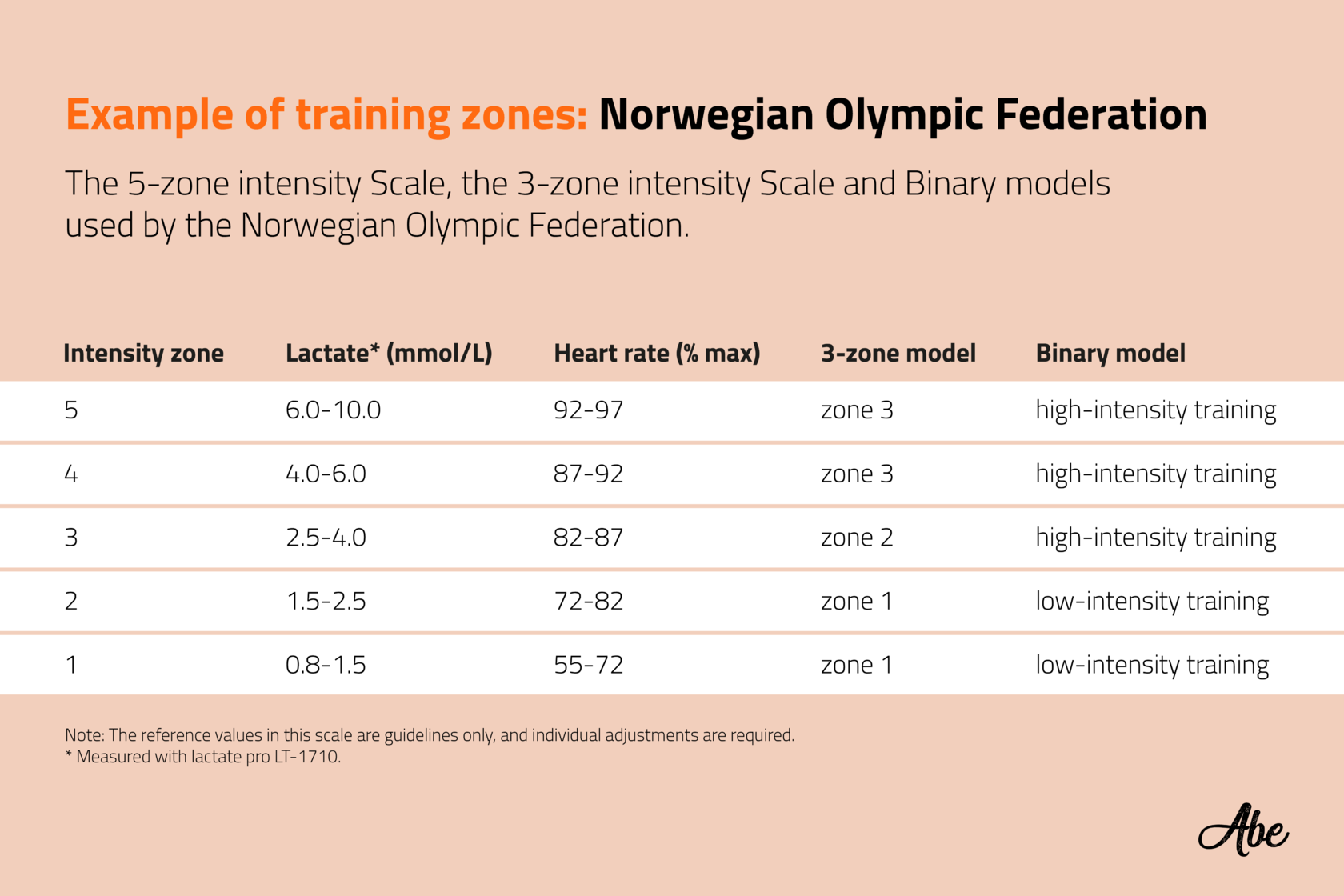The main problem with implementing this model is, as every coach knows, clients differ greatly in their training status and, hence, in level of intensity. To avoid overtraining and injuries you need highly individualised recommendations for each client as well as continuous monitoring of their current state. It is exactly where Abe Health can be of help.
Effective training plan should be built on athletes' individual physiological parameters. Ideally, a coach should take into account at which speed, pace, heart rate or power a client gets to an aerobic and anaerobic threshold. Often this data isn’t available which leaves coaches to guessing or using a limited number of time-proven strategies.
The concepts of thresholds themselves need to be clarified as there are several definitions in modern literature [6, 7, 8, 9]. We at Abe Health follow the current scientific approach and use the term “aerobic lactate threshold” (AeT) for a point, during a graded exercise challenge, at which blood lactate begins to increase above resting values. Therefore the anaerobic lactate threshold (AnT) is a maximal exercise intensity above which a continuous increase in blood lactate is unavoidable.
Generally AeT speed/pace/heart rates refer to the upper limit of intensity in Zone 2 in the 5-zone system or to the upper limit of Zone 1 in the 3-zone system (see tables below). It is usually the upper limit for a steady state long duration training. AnT rates refer to the upper limit of intensity Zone 3 in the 5-zone system or to the upper limit of Zone 2 in the 3-zone system. It is used for moderate and high intensity training regimes [10].

Usually athletes have to undergo a laboratory testing to get their threshold levels. This procedure is rather expensive and time consuming. We at Abe suggest a different solution. By analysing over 2500 laboratory performance tests we came up with an algorithm which allows us to predict AeT and AnT from two easy-to-obtain data points: athletes personal best results (PB) and their rate of perceived exertion (RPE) feedback.

Our machine-learning algorithm can use just one PB to predict PB data of similar exercises for a specific athlete. For instance, having information on how fast an athlete runs 1 km on flat surface Abe can predict PB for 5, 10 and 20 km on flat surface and even for terrain. This approach allows us to get optimal intensities for a variety of exercises avoiding injuries and in the meantime supporting progress of an athlete.
How exactly can we help a coach with decision making? Abe calculates an athlete's intensity zones and predicts PB in different exercises, so when a coach chooses a certain exercise, the system recommends pace/weight/duration suitable for the athlete and his or her training goals. It is up to the coach whether to integrate the recommendation into a training plan or not, but we believe that our advice and predictions will be valuable anyway.
Example. You are choosing an interval training for a certain client. There are many parameters: intensity, duration and the number of intervals, plus duration and intensity of recovery intervals. This gives us a lot of possible combinations, the duration of intervals alone may vary from 30 sec to 20 min. No doubt, you have a favourite scheme, but, knowing a set of client’s characteristics, Abe will suggest you an optimal program, which will probably correct your approach or give you a fresh idea on how to achieve training goals without injuries and overtraining.
[1] Tønnessen E, Sylta Ø, Haugen TA, Hem E, Svendsen IS, Seiler S. The road to gold: training and peaking characteristics in the year prior to a gold medal endurance performance. PLoS One. 2014;9(7):e101796. doi: 10.1371/journal.pone.0101796 https://pubmed.ncbi.nlm.nih.gov/25019608/
[2] Tønnessen E, Svendsen IS, Rønnestad BR, Hisdal J, Haugen TA, Seiler S. The annual training periodization of 8 world champions in orienteering. Int J Sports Physiol Perform. 2015;10(1):29-38. doi: 10.1123/ijspp.2014-0005 https://pubmed.ncbi.nlm.nih.gov/24896267/
[3] Muñoz I, Seiler S, Bautista J, España J, Larumbe E, Esteve-Lanao J. Does polarized training improve performance in recreational runners? Int J Sports Physiol Perform. 2014;9(2):265-72. doi: 10.1123/ijspp.2012-0350. https://pubmed.ncbi.nlm.nih.gov/23752040/#:~:text=Conclusions%3A%20Polarized%20traini
ng%20can%20stimulate,thresholds%20training%20in%20recreational%20runners.
[4] Stöggl T, Sperlich B. Polarized training has greater impact on key
endurance variables than threshold, high intensity, or high volume
training. Front Physiol 2014;5:33
[5] Seiler S. What is best practice for training intensity and duration
distribution in endurance athletes? Int J Sports Physiol Perform 2010;
5: 276–291
[6] Hall MM, Rajasekaran S, Thomsen TW, Peterson AR. Lactate: Friend or Foe. PM R. 2016;8(3 Suppl):S8-S15. doi: 10.1016/j.pmrj.2015.10.018. https://pubmed.ncbi.nlm.nih.gov/26972271/
[7] Wasserman K, Whipp BJ, Koyl SN, Beaver WL. Anaerobic threshold and respiratory gas exchange during exercise. J Appl Physiol. 1973;35(2):236-43. doi: 10.1152/jappl.1973.35.2.236. https://pubmed.ncbi.nlm.nih.gov/4723033/
[8] Kindermann W, Simon G, Keul J. The significance of the aerobic-anaerobic transition for the determination of work load intensities during endurance training. Eur J Appl Physiol Occup Physiol. 1979;42(1):25-34. doi: 10.1007/BF00421101. https://pubmed.ncbi.nlm.nih.gov/499194/
[9] Stegmann H, Kindermann W. Comparison of prolonged exercise tests at the individual anaerobic threshold and the fixed anaerobic threshold of 4 mmol.l(-1) lactate. Int J Sports Med. 1982;3(2):105-10. doi: 10.1055/s-2008-1026072. https://pubmed.ncbi.nlm.nih.gov/7107102/
[10] Seiler KS. Seiler's Hierarchy of Endurance Training Needs. European Endurance Conference, European Athletics Coaching Summit. 2016. https://www.researchgate.net/publication/310725768_Seiler's_Hierarchy_of_Endurance_Training_Needs
